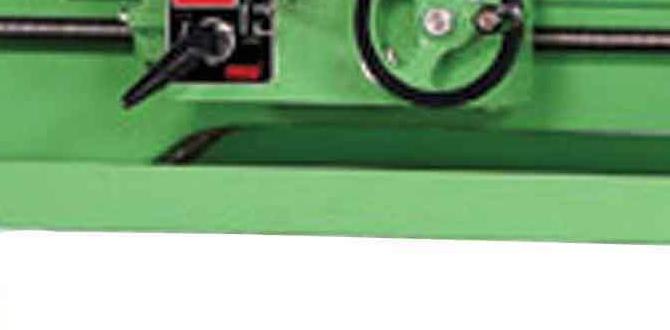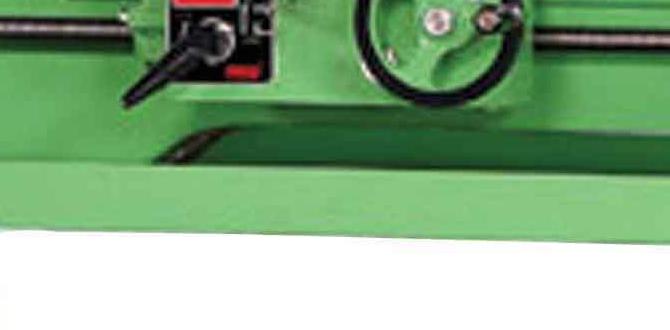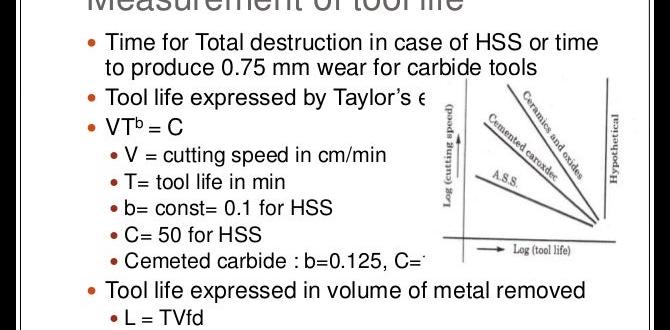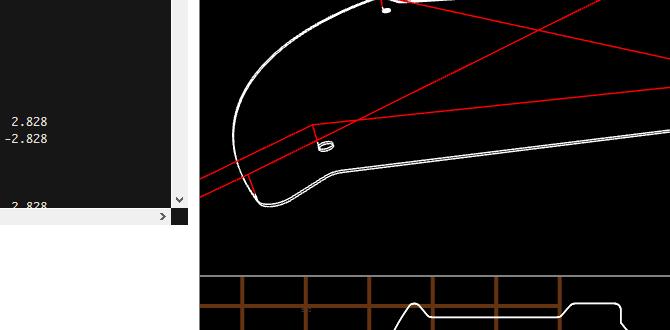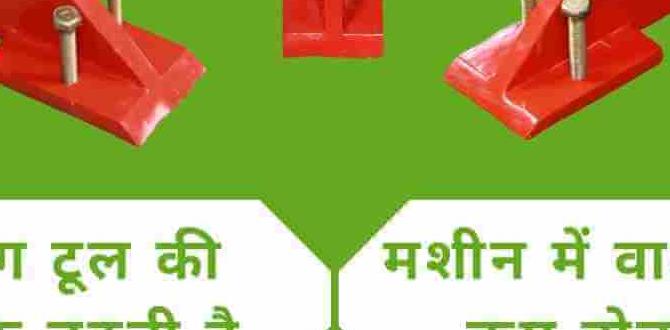This guide provides a step-by-step approach to building a homemade wood lathe tool sharpening station, ensuring your tools stay razor-sharp for better woodworking results and safer operation. Learn how to create an efficient setup that optimizes your sharpening process.
Getting your woodturning tools perfectly sharp can feel like a puzzle sometimes. A dull tool makes your work harder, and it’s more likely to catch or dig into the wood, which can be frustrating and even a little dangerous. Having a dedicated space where you can easily access everything you need to sharpen your tools makes all the difference. Imagine a spot in your workshop where your sharpening stones, guides, and even your grinder are all within easy reach, organized and ready to go. This isn’t just about neatness; it’s about efficiency and getting back to the satisfying process of shaping wood. We’re going to walk through creating a smart, simple sharpening station that will make you wonder how you ever managed without it. Let’s get your tools back in prime condition!
Why a Dedicated Wood Lathe Tool Sharpening Station Matters
For any woodturner, sharp tools are the cornerstone of success. Think of it this way: a sharp chisel or gouge glides through wood, leaving a clean, smooth surface. A dull one tears, struggles, and requires more force, making precision difficult. This isn’t just about making pretty bowls or spindles; it’s about safety. Dull tools are unpredictable. They can catch unexpectedly, leading to kickback, which can cause injury. Having a dedicated sharpening station solves several common problems.
Firstly, it addresses the issue of accessibility. Without a station, your sharpening supplies might be scattered across the workshop. You might have a stone in one drawer, a diamond file in another, and your grinder tucked away in a corner. This disorganization leads to wasted time searching for what you need. When inspiration strikes or a tool dulls mid-project, the last thing you want is a scavenger hunt for your sharpening gear.
Secondly, a well-designed station promotes consistency. Sharpening is a skill that benefits from repetition and a stable setup. When your sharpening equipment is fixed and organized, you’re more likely to maintain consistent bevel angles and achieve a repeatable, keen edge. This consistency translates directly into better results on the lathe.
Finally, a dedicated station can improve safety and workflow. By having everything in one place, you can minimize the movement of tools and potentially sharp edges around your workspace. A well-organized station means you can focus on the sharpening task itself without distractions, enhancing both safety and the quality of your work.
Essential Components of a Wood Lathe Tool Sharpening Station
Building a functional sharpening station involves bringing together a few key elements. These components work together to create an efficient and effective sharpening system. For a beginner-friendly setup, we’ll focus on essentials that can be expanded upon later.
Sharpening Media
This is what actually does the sharpening and honing. You’ll want a combination of coarser abrasives for shaping and repairing edges and finer abrasives for honing to a razor-sharp finish.
- Water Stones or Oil Stones: These are traditional and effective. Water stones typically cut faster and don’t produce dust, while oil stones are durable and stable once seasoned. They require a flat surface and proper lubrication.
- Diamond Plates: Extremely durable and cut on both the push and pull stroke. They don’t require flattening and work well dry or with water as a lubricant. They come in various grits. For general tool sharpening, a medium (around 400-600 grit) and a fine (around 1000-1200 grit) are excellent starting points.
- Sharpening Systems/Jigs: Many commercial systems offer guides to help maintain consistent bevel angles, which is crucial for woodturning tools like skew chisels and scrapers.
Grinding Equipment (Optional but Highly Recommended)
For more significant edge repair or reshaping, a grinder is invaluable. For woodturning tools, a slow-speed grinder is essential to avoid overheating and damaging the tool’s temper.
- Slow-Speed Grinder (1750 RPM recommended): Essential for wood tools. A standard 3450 RPM grinder can overheat and ruin a tool’s edge.
- Grinding Wheels: Usually aluminum oxide for steel. For wood tools, white aluminum oxide wheels are often preferred for less “glazing.”
- Water Trough Grinder: Some grinders have a built-in water bath to keep wheels cool and dust down.
Magnification and Lighting
Being able to see the edge clearly is vital for effective sharpening. You need to know when the wire edge is gone and when you’ve achieved a polished bevel.
- Magnifying Lamp: An adjustable arm magnifying lamp is fantastic for close inspection of the tool’s edge.
- Good Workshop Lighting: Ensure the entire sharpening area is well-lit to avoid shadows and eye strain.
Support and Measurement
Stability is key. You need surfaces that hold your tools and abrasives steady, and tools to measure your progress.
- Sharpening Vise or Clamp: To hold stones or diamond plates securely.
- Angle Guide: A simple protractor or specialized angle gauge to check bevel angles.
- Bench Block or Rest: A stable surface to support your tool while you work on it.
Storage and Organization
A place for everything keeps your station tidy and ready for use.
- Tool Holders: Pegboards, racks, or custom-built holders for your chisels, gouges, and scrapers.
- Drawer Inserts or Boxes: To keep smaller items like stones, compounds, and rags organized.
- Water and Rags: Essential for cleaning tools and stones. Keep a supply of clean rags handy.
DIY Wood Lathe Tool Sharpening Station: A Simple Build
Creating your own sharpening station can be a rewarding project that perfectly suits your workshop space and needs. This guide outlines a straightforward build, focusing on a sturdy workbench-style setup that can house a grinder and offer ample space for hand sharpening. We’ll aim for a mobile unit so you can position it conveniently.
Materials You’ll Need:
- Plywood (3/4 inch for the main box, 1/2 inch for shelves/dividers)
- Dimensional lumber (e.g., 2x4s or 1x4s for framing and legs if building a standalone unit)
- Screws (wood screws, appropriate lengths)
- Hinges (for any doors or lids)
- Drawer slides (if adding drawers)
- Castors (heavy-duty, locking, if making it mobile)
- Sandpaper (various grits for finishing)
- Wood glue
- Optional: Paint or stain for finish
Tools You’ll Need:
- Measuring tape
- Pencil
- Saw (circular saw, miter saw, or table saw)
- Drill/driver with drill bits and driver bits
- Sander (orbital or block sander)
- Clamps
- Safety glasses and hearing protection
Step-by-Step Construction
Let’s build a basic cabinet-style sharpening station. This design assumes you’ll place a benchtop grinder on top and have storage below for stones and tools. We can adapt this as needed.
Step 1: Design and Cut Your Pieces
Decide on the dimensions that will fit your space and accommodate your grinder. A common size might be around 24-30 inches wide, 18-24 inches deep, and 30-36 inches tall (or counter height). This allows for comfortable standing work.
Basic Box Construction:
- Cut two side panels from 3/4-inch plywood.
- Cut a top panel and a bottom panel from 3/4-inch plywood.
- Cut internal shelves or dividers from 1/2-inch or 3/4-inch plywood.
- Cut a back panel (1/4-inch or 1/2-inch plywood) if desired for added rigidity and dust protection.
Step 2: Assemble the Main Box
This is the core of your station. You can build it as an open cabinet or add doors later.
- Apply wood glue to the edges where panels will meet.
- Use screws to secure the side panels to the bottom panel. Pre-drilling pilot holes will prevent the wood from splitting.
- Attach the top panel to the assembled sides and bottom.
- If you want a more robust structure, particularly for supporting a grinder, you can add a 1×4 or 2×4 frame around the top edges of the side and front panels where the grinder will sit.
Step 3: Install Shelves and Dividers
These create organized spaces for your sharpening media and supplies.
- Measure and mark the desired heights for your shelves inside the main box.
- You can install simple shelves by attaching cleats (small strips of wood) to the inside walls at your marked heights, then resting the shelves on top.
- Alternatively, you can cut dadoes (grooves) into the side panels for the shelves to sit in, providing a stronger joint.
- Use wood glue and screws to secure the shelves.
Step 4: Add a Base and Mobility (Optional)
If you want a freestanding unit, you’ll need legs or a base. For mobility, castors are excellent.
- Cut 2x4s or plywood to create a sturdy base frame that fits under your cabinet.
- Attach the cabinet to the base using screws from the bottom of the cabinet into the base frame.
- Mount heavy-duty locking castors to the corners of the base. Ensure they can support the weight of the cabinet when fully loaded with tools and grinder.
Step 5: Prepare the Grinder Mounting Surface
This is critical for safety and stability.
- If your cabinet top is not thick enough or sturdy enough for the grinder’s mounting bolts, create a reinforced platform. This can be a piece of thick plywood or even a metal plate.
- Ensure the surface is perfectly flat.
- Mark the mounting hole locations for your specific grinder.
- Drill holes. You might need to install threaded inserts or bolt bosses from underneath for a secure machine-screw mounting.
Step 6: Add Finishing Touches
This makes your station functional and aesthetically pleasing.
- Tool Holders: Mount pegboard to the back, or build custom racks to hold gouges upright. You can use blocks of wood with drilled holes.
- Stone Storage: Use dividers to create slots or compartments for your water stones or diamond plates. Consider a water-resistant finish in these areas.
- Drawers: If you’ve planned for them, install drawer slides and build simple drawers to house smaller items like honing compounds, rags, and angle gauges.
- Lighting: Mount an adjustable LED or fluorescent lamp to the back or side of the unit. Ensure it provides good illumination over the grinder and sharpening areas.
- Finishing: Sand all surfaces smooth. Apply a durable finish like polyurethane or a water-resistant sealant, especially on surfaces that might come into contact with water or oil.
Mounting Your Grinder
This is a crucial step for safety. Ensure your grinder is securely bolted down. Many grinders come with mounting bolts or holes.
Important Note: Always use a slow-speed (1750 RPM) grinder for woodturning tools. Higher RPMs can overheat the tool’s steel, ruining its temper and making it dull much faster.
For more information on selecting and using grinders, visit resources like Wood Magazine’s guides on tool sharpening for best practices.
Integrating Hand Sharpening Techniques
While a grinder is fast for removing metal and reshaping, hand sharpening is often preferred for the final honing stage and for maintaining tools that don’t require significant reshaping. Your station should accommodate this.
Using Water Stones or Diamond Plates
Sharpening stones (water or oil) and diamond plates offer excellent control for achieving a fine, sharp edge. The key is to maintain a consistent angle.
For Gouges (e.g., Bowl Gouges):
- Rest the tool on the base of its flute.
- Hold the gouge handle in one hand and the flute in the other.
- Align the bevel against the stone or plate. The angle should be just enough to make contact with the edge. For most bowl gouges, this will be between 30 and 60 degrees, depending on the grind.
- Move the gouge in a gentle, sweeping motion across the stone, moving from heel to tip.
- Maintain consistent pressure and angle.
- Repeat on the other side until a burr (a small, raised edge) forms on the opposite side of the cutting edge. Feel for this burr by carefully stroking your fingertip away from the edge.
- Hone the burr off by a few light passes on the stone, or use a leather strop with honing compound.
Stropping for the Final Edge
Stropping removes any lingering burr and refines the edge, making it incredibly sharp and smooth. This is usually done on a leather strop, often charged with a fine abrasive compound (e.g., chromium oxide).
How to Strop:
- Lay the tool bevel-down on the strop.
- Use a light pressure and pull the tool away from the edge (never push into the edge on a strop, as this can nick it).
- Alternate sides, making several light passes on each. You’re not trying to remove metal, but rather to align the microscopic teeth of the edge.
Your sharpening station should have a dedicated space for a sharpening stone or plate, perhaps secured in a vise or on a non-slip mat so it doesn’t move.
Table: Sharpening Media Comparison
Choosing the right abrasive is important. Here’s a quick look at common options:
| Sharpening Medium | Pros | Cons | Best Use |
|---|---|---|---|
| Water Stones | Fast cutting, produce fine burrs, can be self-sharpening. | Require soaking, can dish (wear unevenly), need flattening, can be messy. | Excellent for achieving very sharp edges, good for all tool types. |
| Oil Stones | Durable, stable, don’t require soaking, consistent. | Can clog, cutting speed varies, require oil, can be slower than water stones. | Good for general sharpening and touch-ups. |
| Diamond Plates/Stones | Cut rapidly, no soaking needed, very durable, stay flat. | More expensive initially, can scratch finer stones if not careful, less feedback than stones. | Ideal for all metals, very efficient for quick sharpening and when a flat surface is needed. |
| Grinding Wheels (Slow Speed) | Removes metal quickly, good for reshaping damaged tools. | Can easily overheat tool if not careful, generates dust, requires careful angle control. | Initial shaping, repairing damaged edges, rough sharpening. |
Safety First! Essential Sharpening Station Practices
Working with sharp tools and rotating machinery demands respect and attention. A good sharpening station is also a safe one.
Grinder Safety
- Always use a slow-speed grinder (1750 RPM) for woodturning tools. Higher speeds WILL overheat and ruin the temper of your tools.
- Never operate a grinder without spindle locks or guards in place.
- Check wheels for cracks or damage before each use. Never use a damaged wheel.
- Stand to the side of the wheel when starting the grinder.
- Keep the tool rest adjusted close to the wheel (about 1/8 inch gap) to prevent the tool from catching.
- Always grind on the face of the wheel, not the side.
- Use a light grip and let the wheel do the work. Avoid forcing the tool.
- Dip your tools in water frequently to prevent overheating. A trough grinder

